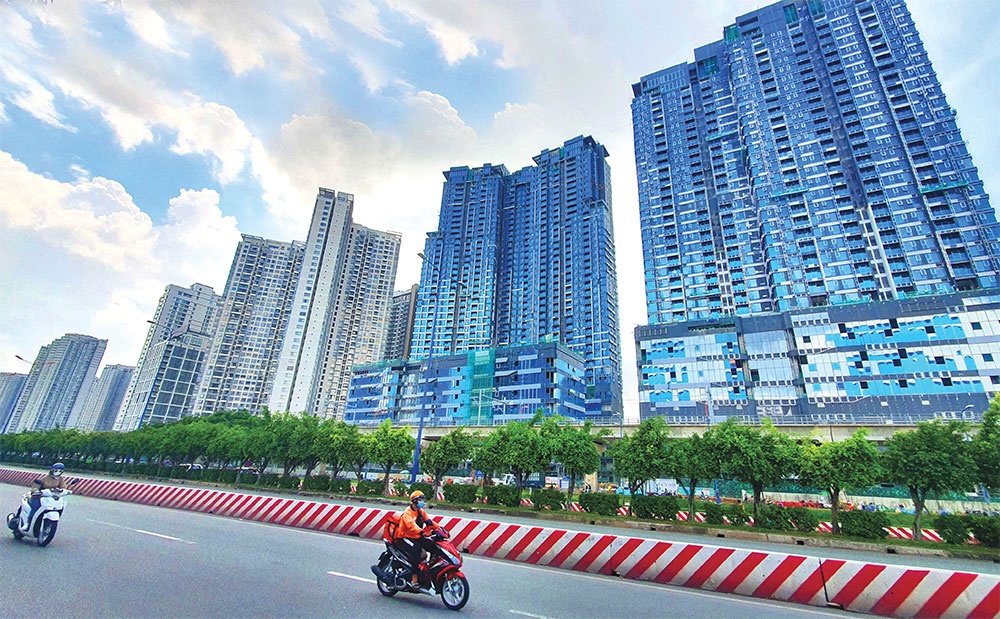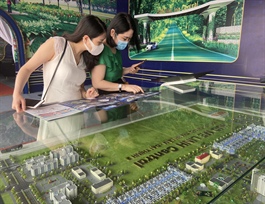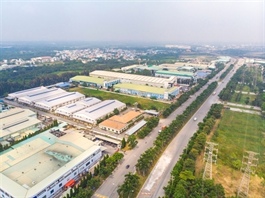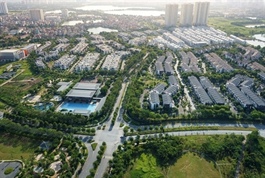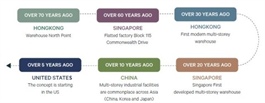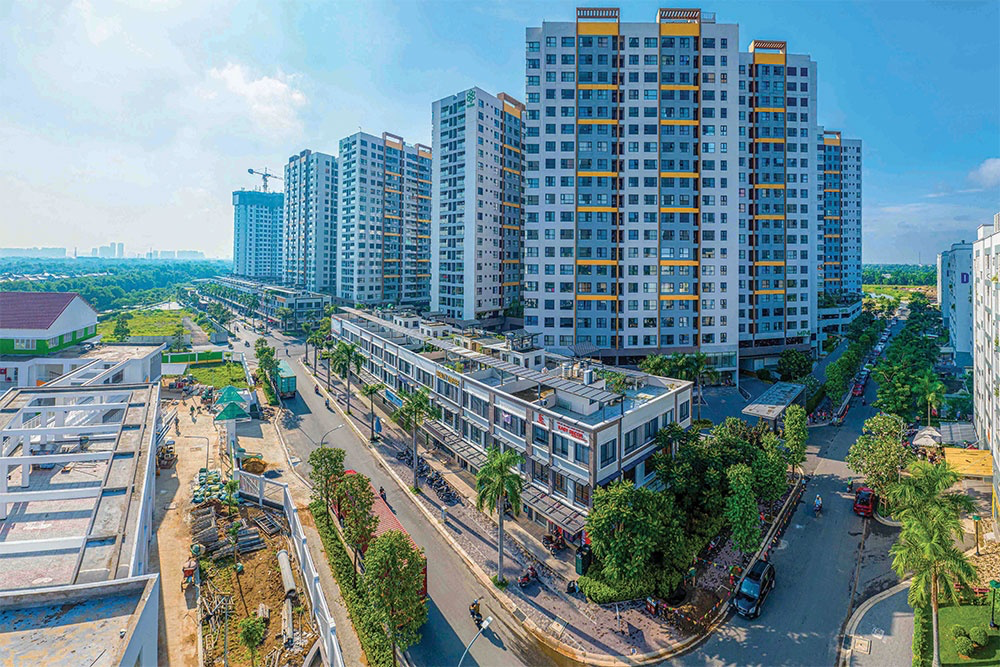Hanoi's real estate market sees breath of air on the horizon
Hanoi's real estate market sees breath of air on the horizon
As Hanoi focuses on developing new urban areas to accommodate a growing population, Dong Anh has become a target for significant investment in infrastructure and services.
Hanoi's real estate market is expected to get a boost from the transformation of the rural Dong Anh district into an urban area.
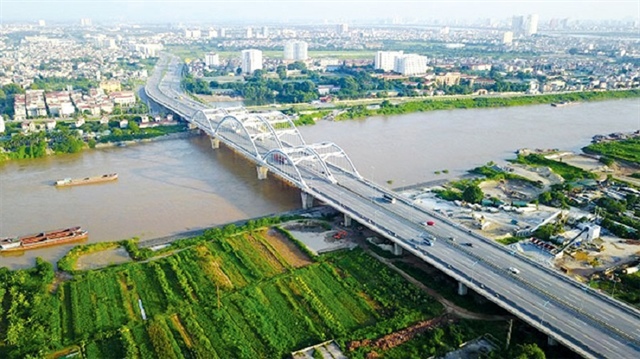
Dong Tru Bridge connects Dong Anh District with Hanoi's downtown. Photo: Pham Hung/The Hanoi Times |
Dong Anh District, which has emerged as one of Hanoi's major real estate development hubs in recent years, has seen a surge in property prices driven by urban planning and infrastructure development.
However, in 2023, the district's real estate market experienced a downturn due to economic challenges, resulting in a decline in transactions, especially in the lucrative land segment.
Nevertheless, Dong Anh has strong potential to transform into a modern urban area, given its position as the northern gateway to Hanoi and the significant investment in infrastructure development.
Plans for the upgrading of the district, the expansion of the central urban area along the north bank of the Red River, and the attraction of major domestic and international real estate players such as Sun Group, Vingroup, BRG, and Becamex ITC have boosted confidence in the market.
Nguyen Van Dinh, Vice Chairman of the Vietnam Real Estate Association, noted that the local real estate market has flourished since the announcement of Dong Anh's planned transition to urban areas.
"Housing prices have skyrocketed, surpassing those in other areas of Hanoi. There has also been an influx of investment from large companies in various projects, which has added to the feverish demand for real estate in Dong Anh," Dinh said.
Notable projects include Vingroup's ambitious national exhibition center in Dong Hoi commune, Sungroup's Disneyland Park, Kim Quy cultural tourism project in Vinh Ngoc and Tien Duong communes, Becamex ITC's software technology park in Tien Duong and Nguyen Khe communes, and the BRG Smart City project jointly implemented by Sumitomo Group and BRG Group in Vinh Ngoc and Hai Boi communes.
"These developments underline the immense potential of Dong Anh's real estate market at present," he said.
Previously, Vinh Ngoc, Hai Boi, Tien Duong and Nguyen Khe communes were predominantly rural, with people mainly engaged in agricultural activities. However, significant investments in infrastructure and transportation have transformed these areas.
New services have emerged, seeping into every alley and leading to a significant increase in land prices. What was once valued at VND5-10 million (US$211-422)/m2 around 2010 has now escalated to VND50-60 million (US$2,110-2,500)/m2.
Similarly, in Dong Anh Town and Uy No Commune, land prices have reached an astounding VND300 million ($12,674) per square meter on certain major streets, signifying a remarkable transformation in this rural region.
Dinh said as Hanoi focuses on building new urban areas to accommodate a growing population, Dong Anh has become a target for substantial investment in infrastructure and services. As a result, there has been a strong shift in real estate investment towards this area, he continued.
Hotspot for investment
Dong Anh has now met the criteria to become an urban district, and all necessary processes and procedures are expected to be submitted for approval by the government and the National Assembly Standing Committee by the end of 2023.
However, it is unlikely that the real estate market in Dong Anh will experience a boom similar to previous periods. Housing prices in the area have already exceeded the market average, coupled with increased government regulation and control.
However, this will not hinder the market's development in the short term, as Dong Anh has become a prime investment attraction.
"Thanks to its advantageous location and available land resources, Dong Anh is seen as a preferred destination for various sectors, including services, finance, international trade, eco-tourism, sports and entertainment, and hi-tech industries," said architect and urban expert Tran Tuan Anh.
Anh added that the real estate market in Dong Anh is expected to continue its growth trajectory, solidifying its status as a promising investment hotspot for developers.
"The combination of location advantages and land availability makes Dong Anh an attractive prospect for real estate investors," he continued.
The appeal of Dong Anh goes beyond the current and planned super projects. The area serves as a focal point for numerous urban and residential developments and future resettlement plans. In addition, forthcoming investments in bridge and road infrastructure are adding further momentum to the real estate market. Dong Anh has the potential to achieve impressive growth figures as it positions itself as a city along the Red River.
However, experts caution that the current Dong Anh real estate market may not be suitable for speculative investors, as prices are high and the area is entering a period of stability and sustainability.
"In reality, land prices in Dong Anh and Gia Lam experienced a sharp increase after the district upgrading plan was announced, followed by a decline. From now on, land prices in these areas are expected to continue to rise steadily, following a well-planned trajectory. Investors looking to deploy their capital should take a long-term perspective," said Do Thi Thu Hang, Director of Savills Hanoi Research & Consulting Department.
To minimize risks, investors are advised to consider key factors such as planning information, the potential for price appreciation in the area, the presence of reputable developers, and historical market movements. It is crucial to avoid falling into the trap of unscrupulous brokers looking for quick profits, Hang said.



